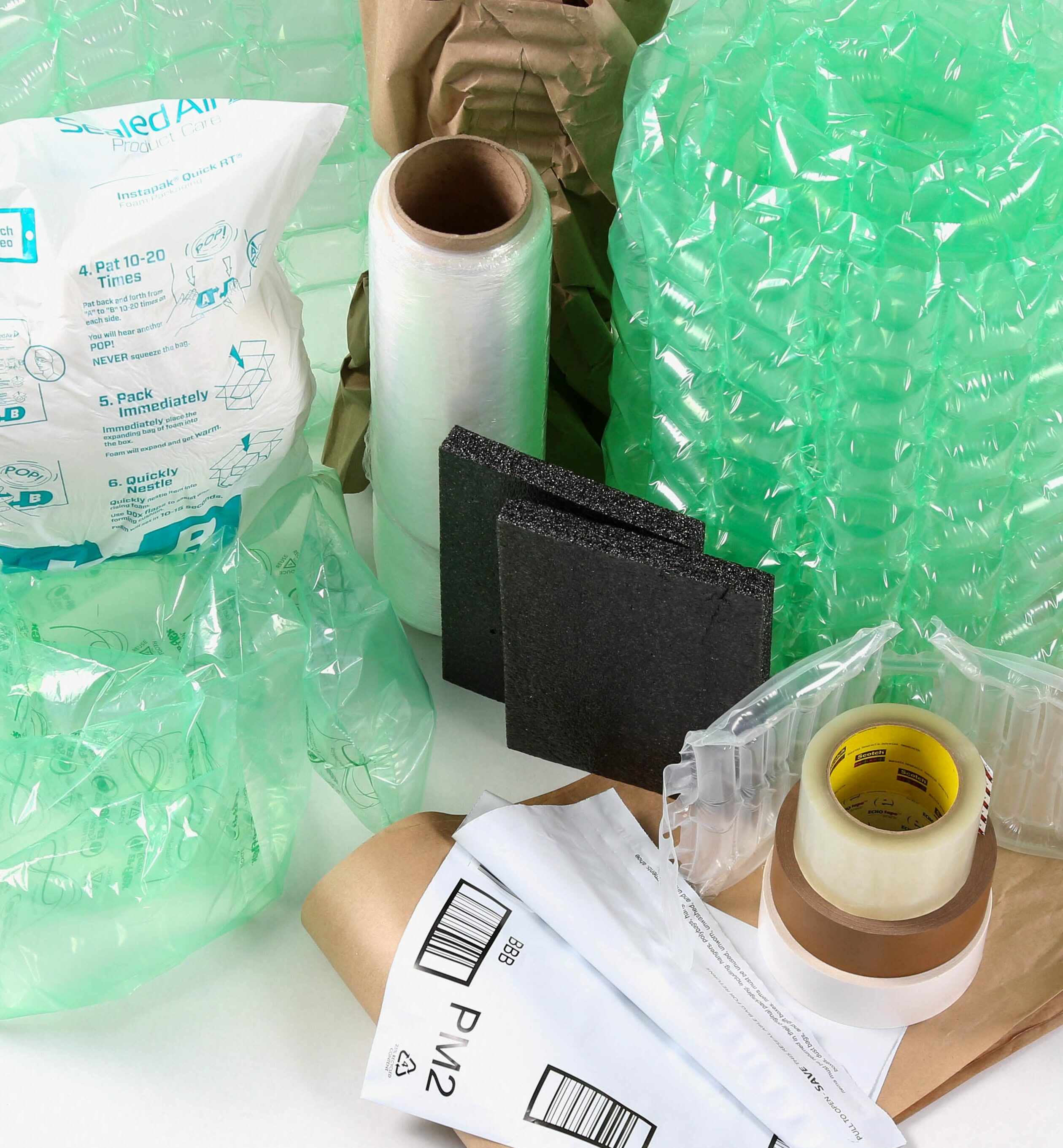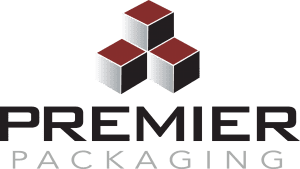“Void fill” goes by several names, including packing material and packaging filler, but it all has the same function: Keeping your product safe during shipping. The kind of void fill you need is determined by what you want it to do.
- Cushioning at the bottom and/or top of your package to protect its contents.
- Blocking and bracing, i.e., filling empty space in your package to hold products in place.
- Individual wrapping, for fragile items like glass and pottery.
- Making your product look good while also protecting it.
Pros and Cons:
 Packing peanuts are cheap and effective for rapidly filling up space in a package. Cons: They need lots of storage space, and the traditional polystyrene foam ones are not recyclable.
Packing peanuts are cheap and effective for rapidly filling up space in a package. Cons: They need lots of storage space, and the traditional polystyrene foam ones are not recyclable.- Bubble wrap/foam roll, made from thin, flexible plastic, easily wraps your products in a protective layer. It’s cheap, reusable, and doesn’t add much bulk. Fun to pop too! Cons: Bubble wrap rolls take up a lot of space, and you can only recycle the material at specific drop-off points.
- Air-based void fill—polyethylene bags inflated by a machine—are lightweight, so they don’t increase shipping costs, and un-inflated they save storage space. They’re far less messy than packing peanuts or shredded paper. Cons: Polyethylene is non-biodegradable, taking an estimated 500 years to forever to break down. Air pillows need to be dropped off at specific recycling locations.
- Paper (tissue, butcher, newsprint, crinkle) can wrap items for cushioning, fill up space in package, and be easily customized for branding purposes. It’s easily recyclable and doesn’t take up much storage space. Cons: A lot of paper is needed to provide decent protection.
Current Trend: Sustainability
- Void fill made from natural and biodegradable materials, like recycled/recyclable paper, corrugated, or packing peanuts made from cornstarch. After use, for example, you can dissolve the cornstarch peanuts in water.
- Wrap made from shredded corrugated or layers of paper. These alternatives to bubble wrap are 100% recyclable and compostable. You can make a nest or ball with them, wrap your products with them, line the bottom and top of your box, etc.
- Packaging adapted to the product. In 2019, a large detergent company switched from plastic bottles to placing its liquid detergent in a bag suspended in a corrugated box. The corrugated is easily recyclable, and the packaging design creates much less waste.
Another way to reduce void fill is to right-size your packaging. This can also reduce dim weight, with savings on material and shipping costs. Talk to our experts at Premier to find out more about the best void fill options for you!
